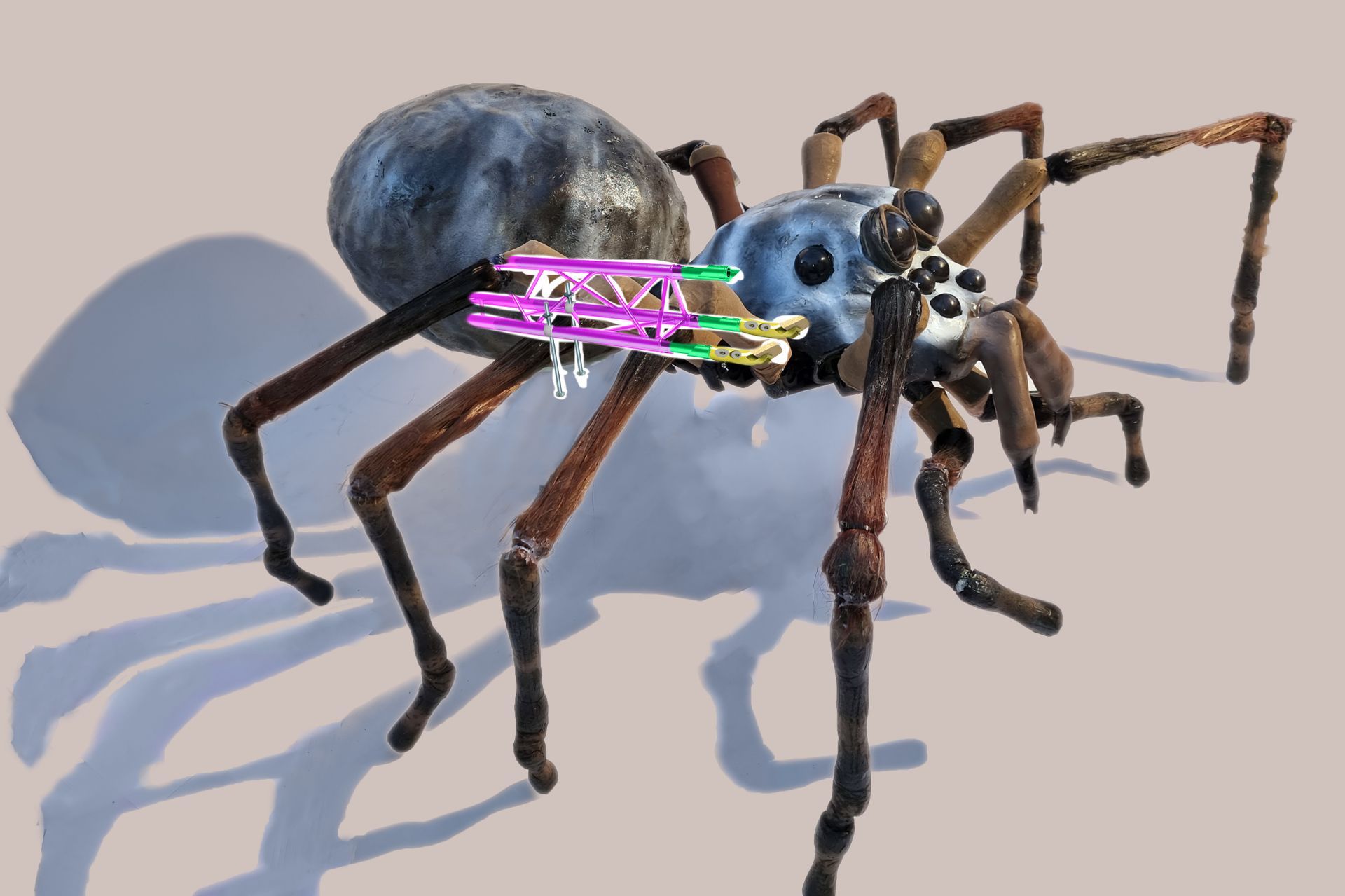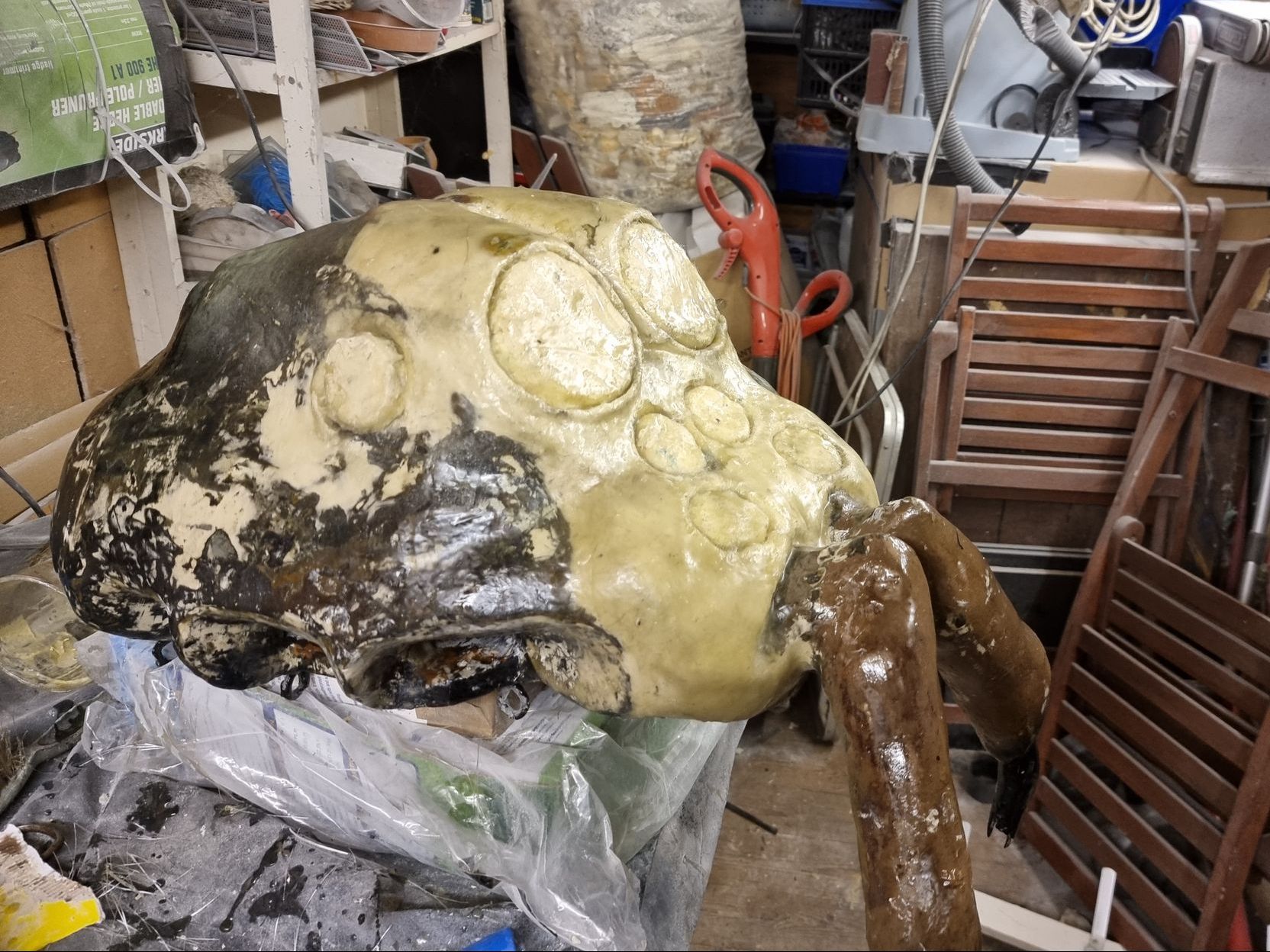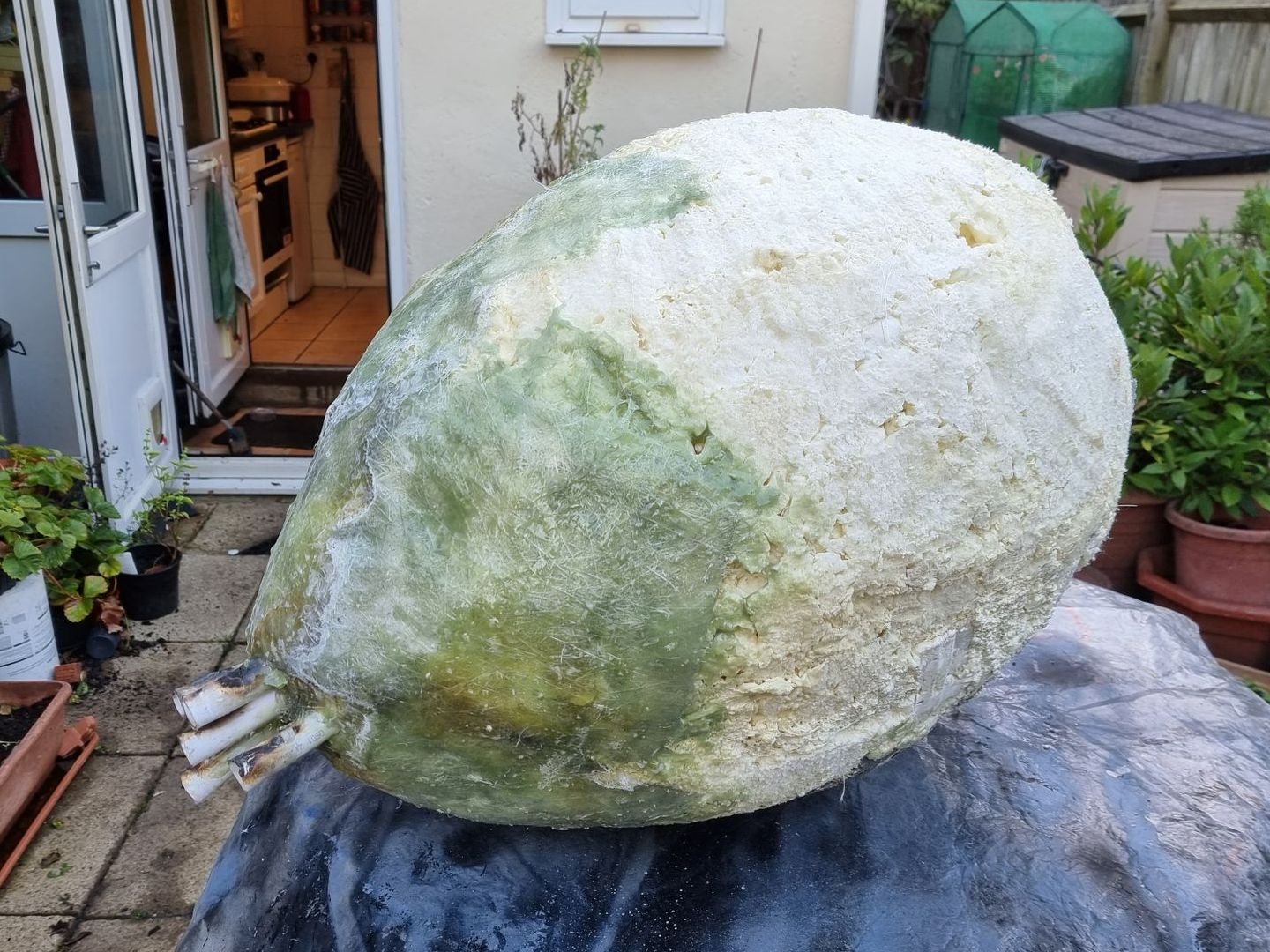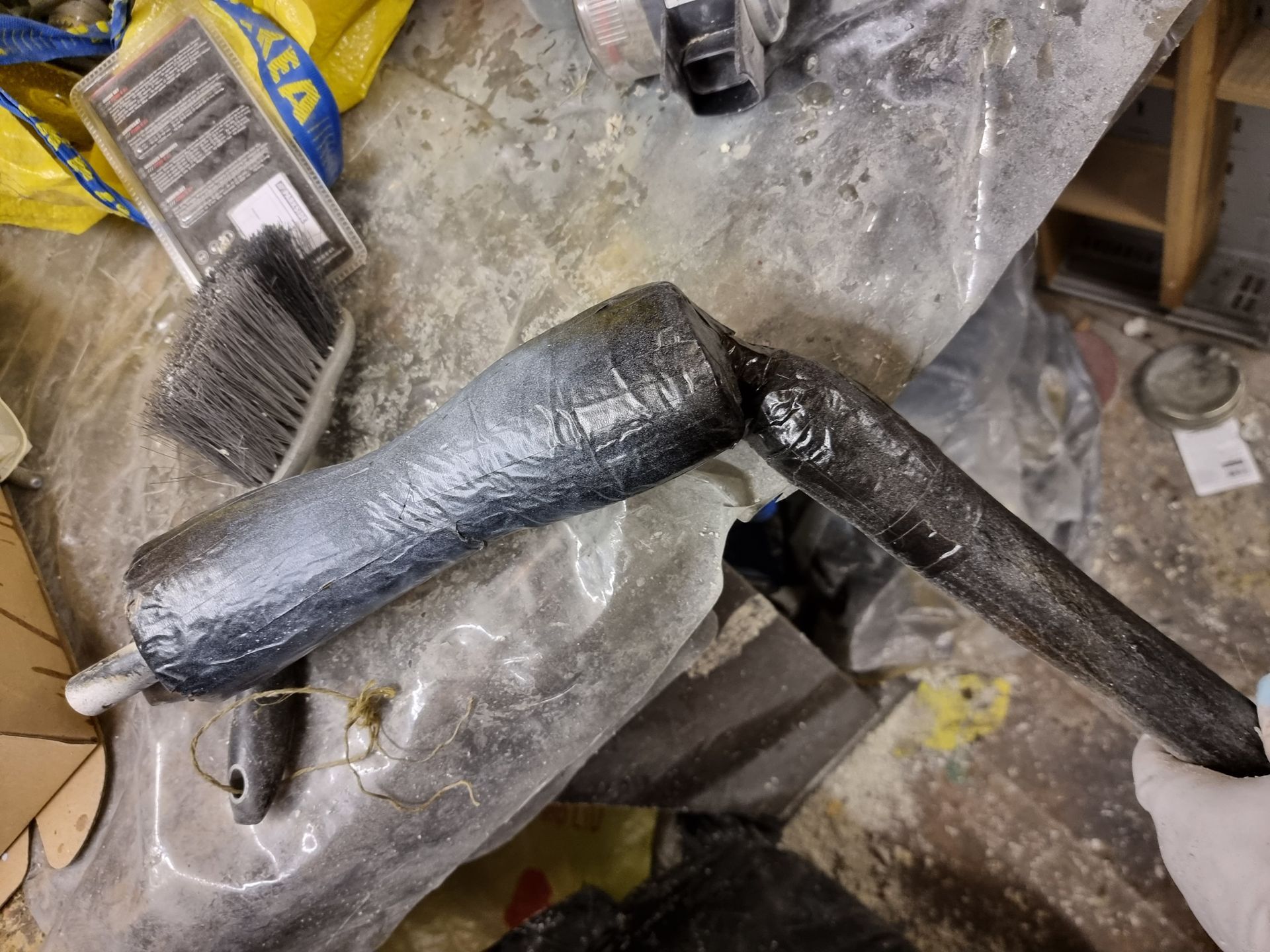Prop Tarantula Proposed
Further Development
Body
Issues
The body has various issues, some of which may need major alterations. These include:
- Uneven Underside
- The Weight
- Connecting, Splicing and Size
- Fur
Uneven Underside
Whilst the body should be fully round like in nature. A flat base or wide enough base section would help stabilise the body when working on it on a table or work bench or vice, also if in a car for transportation to stop it moving around.
A straight cut and fibre glassing on the base to trim it flat could do.
The trick is how to get the round egg body held in place to slice off the bottom. Possibly with a large 1.5 m diameter plus industrial circular saw or similar.
As there is no need to mesh this, it just has to be even, the cut does not have to be perfect. This can then just get fibre glasses over.
With a flat underside base it can sit stably on a table or some form of workshop vice for further tooling.
It also makes fitting stands. on the base a lot easier.
However this is not an easy thing for me to do without major industrial workshops as the shell is slippery fiberglass and the blade would be contacting very shallow angle so likely to deflect and as fully round cannot stay still .
Weight
Currently the combined weight of the head, connectors, legs and body is too heavy.
The original plan was to have the prop spider balance on a typical terraced house, living room, bay window roof. This was to be initially held in place with high strength fishing line rated at 20 kilos each.
The prop spider is now too unwieldy, unstable in the way it is held together, the legs certainly don’t support the weight. The first-generation stool stands and bucket system does not properly balance the spider. Size wise seems too big but it is yet to be weighed.
With all the additional weight added onto the original concept from Paul Jones, attempting to lift it onto the roof and tie it in place without a crane and proper official safe standard industrial clamping system is unlikely to be safe. The front garden had thick rose bushes and on top of the dangers of the prop with weight dropping onto someone directly, they could be pushed into the buses and impaled as well as this happening whilst trying to place the prop. It has also cost over £1000 so don’t want it destroyed.
Any means of substantially lowering the weight would help. Certainly, with and future props creatures.
At present can’t think how.
Head to Body - Connection
Connection - Retrofit
Other than total lack of strength to counter sheer forces and a lack of a locking system, a major problem with a single round pipe is that the body and head swivel on it, so the body spins on the axis.
A rod pin or bolt through the base into the connecting pipe could stop this, but trying to accurately target this to go through the pipe from the base when it is not even flat this will be next to impossible.
The way I tried to currently do this was to use two parallel 21 mm pipes and two connectors instead of 1 to counter the torque. This is adds some strength in the X axis, but mostly in the X axis. However most of the bulk and weight induced sheer force is in the Y axis.
Currently the pipes are not connected. Each is just attached on swivelling connector components. These slid into two tied down pipe laggings acting as long female sockets in the body section. Being foam this allows directional movement I tried to stop by minimising the entrance holes size with the fibreglass shell .
A figure of 8 connector could lock the pipes together to help prevent torque. This could be 3D Printed or made in wood which could be stronger.
A third pipe that is higher up to form a triangle could make a stronger connection but the head is only designed to allow for connectors to be added at one level. There is no easy way to do this, at all, the head and body would need to be designed from the ground up.
Thicker connection pipes may be stiffer, but not by much. In theory these could be slipped over the existing pipes to thicket the pipe walls, but in the DIY shops I got the pipes from did not sell sizes that fit one over the other. Not sure if I could get pipe lagging to fit the next size up either.
Internal wood dowels, or glass fibre rods may also help. Again trying to fit the right size for a close fit is difficult as not standard sizes.
Connection - Restart
Ideally starting from scratch the body would be built around an internal structure designed from the get go to incorporate a pin or bolt locking system and a stiffened 3 way triangular structure. Something like 3 way aluminium lighting truss with long bolts to foam a structure.
This can be surrounded by balloons with the insulation foam around them, then shelling that in carbon fibre.
Locking
Strapping system systems with locking buckles could help as could large toggle clasps which would be stiffer.


SPLICING AND SIZE






















